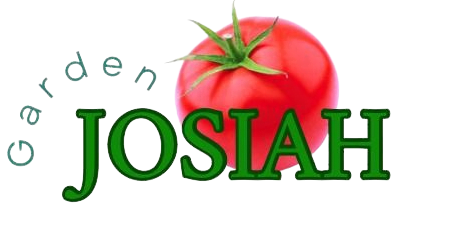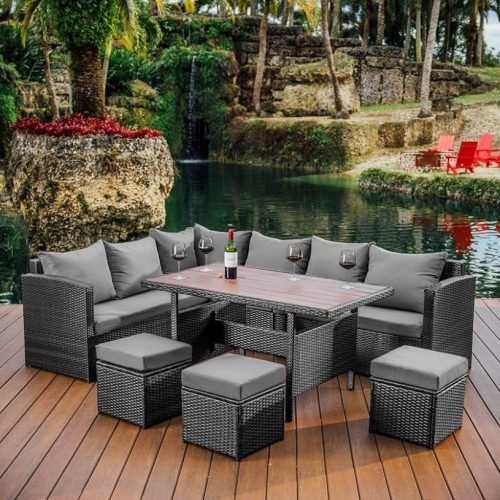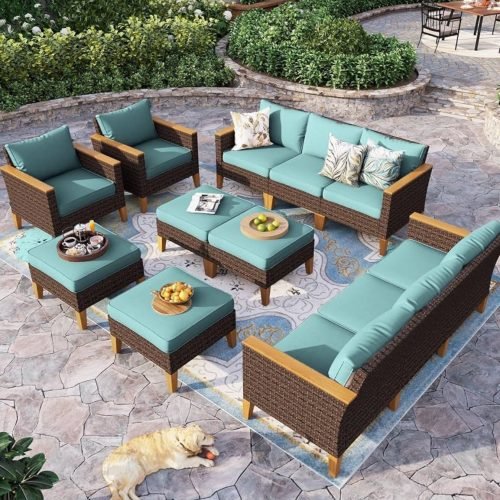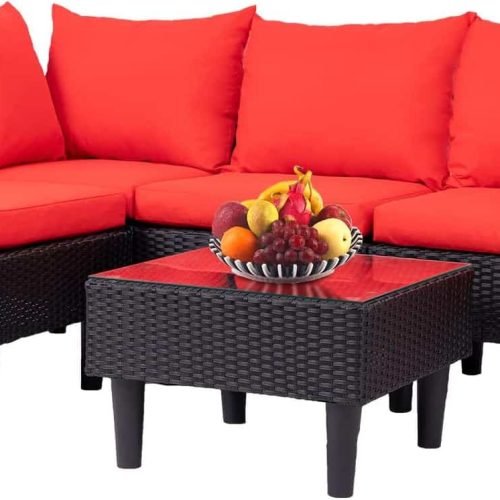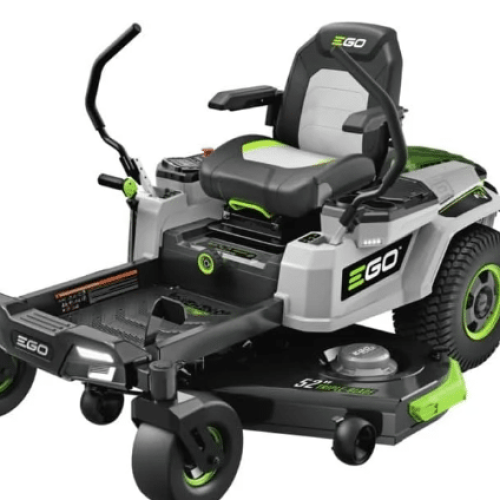Hey guys ! Hope all is great it’s JV Charles founder of Gardenjosiah.com. Did you know over 70% of American households now have a garden1? As we head into 2024, more people want super cool, easy-to-care-for gardens and gardens that grow food. Lots of yummy food. Our top 10 tips will help you make a beautiful outdoor space that’s fun, feeds you, and helps the planet.
We’ll cover everything from knowing your garden’s seasons to using plants that don’t need much water. These expert tips and new ideas will help you make the most of your garden in 2024. Whether you’re a pro at gardening or just starting, these tips will help you grow a lovely, full, and green outdoor area.
Key Takeaways
- Discover the importance of USDA hardiness zone determination and soil testing for optimal plant growth1
- Learn how mulching, crop rotation, and pruning contribute to plant health and maintenance1
- Explore the benefits of Integrated Pest Management (IPM) and the role of beneficial insects in natural pest control1
- Understand the impact of proper harvesting and preservation techniques on produce quality and waste reduction1
- Gain insights into the importance of regular weeding and its role in maintaining a thriving garden1
Understand Your Garden Seasons
Knowing your garden’s seasons is key to a thriving oasis. We’ll look at the warm, hot, cool, and cold seasons. We’ll see how to make the most of your gardening all year. Ive been gardening for about 35 years so I know these tips can help!
Warm Season
The warm season starts after the last spring frost and ends before the first fall frost. It’s when temps are mild, and many plants do well2. This is perfect for planting warm-weather crops like the ole tomatoe, peppers, and zucchini, along with annual flowers.💐
Hot Season
Summer brings the hot season, usually from July to August in milder climates2. Temperatures rise, and some plants may find it tough. To keep your garden going, water deeply, mulch heavily, and pick heat-tolerant plants2. All of these tips help a bundle. Trust me!
Cool Season
Brrrrrrrr! The cool season is before and after your last/first frost, lasting three months or so2. It’s great for cool-weather crops like lettuce, broccoli, and peas. All varieties of peas. It’s also good for spring-blooming bulbs and perennials2. Use this time to plan your cool-season plantings and get ready for the change. If your trying be a super gardener. 😆
Cold Season
Winter brings the cold season, the three coldest months2. Temperatures rarely go above freezing. Protect tender plants, mulch, and plan for the growing season ahead.
Understanding each garden season helps you plan better. You can time your planting, care, and maintenance for the best garden health and productivity3. Keep these tips in mind as you start your gardening journey23. It will help a lot.
Embrace Environmental Stewardship
As we look to the future of home gardening, taking care of the environment is key. Sustainable gardening practices are good for the planet and make beautiful, eco-friendly gardens4. By using organic methods and cutting down on chemicals, we lessen our environmental impact and keep our gardens healthy4. Using native plants that need less water and upkeep also saves natural resources4.
Turning green waste into fertilizer through composting is another way to help our gardens be sustainable4. Mulching, saving water with techniques like rainwater harvesting, and using recycled materials for garden beds and pots all help reduce our environmental impact45. Plus, choosing plants that help pollinators and using energy-efficient lights shows our dedication to eco-friendly gardening4.
Looking ahead, we’ll see more gardens using native plants and supporting biodiversity5. Gardeners will focus on plants that help local wildlife, protecting native species and the environment5. By using less water, improving soil health, and picking tough plants, we can make gardens that do well even with climate change5.
“Gardening is the art that uses flowers and plants as paint, and the soil and sky as canvas.” – Elizabeth Murray
By taking care of the environment in our gardens, we make beautiful spaces and help the world45. Together, we can encourage others to garden sustainably, making a positive change in our communities and the planet45.
Grow Your Own Fruit
More and more people are enjoying the fun of growing their own fruit at home. You don’t need a big yard to do this. There are many ways to grow tasty, fresh fruits right in your own backyard6.
If you have a big garden, think about planting Asian persimmons like ‘Saijo’ and ‘Fuyu’, or the native American persimmon for a unique taste6. The pawpaw is another great choice, with its tropical flavor from the Eastern United States6.
Don’t worry if you have limited space! There are many small fruit plants that do well in pots. Try Bushel and Berry® blueberries, Fignomenal® figs, or Sweet Kiss™ strawberries for your balcony or patio6.
Growing your own fruit lets you enjoy the taste of your hard work. It also helps the planet and is a fun hobby. Start your own fruit garden and make a beautiful, edible oasis7.
“Gardening is a way to connect with nature, promote sustainability, and enjoy the freshness of homegrown produce.” – Martha Miller, Urban Gardening Enthusiast
Houseplants Remain Popular
Houseplants are still winning hearts in 2024. Favorites like Sansevieria (or mother-in-law’s tongue)8 and Monstera are in high demand9. These plants are easy to care for and add beauty to any space9.
Brands like Proven Winners are helping new plant lovers grow their indoor gardens. They offer plants with easy-to-follow care guides9. This makes it simple for anyone to take care of their plants.
Plant Options
People are looking for rare and unique houseplants10. African Violets are expected to be big in 20248. Fiddle Leaf Figs and Monstera deliciosas will also stay popular8.
New trends include plants with unusual looks and patterns8. Cyber Lime Foliage and neon green plants are set to become more popular8. Mini indoor gardens, like terrariums, are also gaining fans for their beauty and ease98.
Today’s plant lovers care about the planet and their health. They’re looking for eco-friendly products and plants that clean the air910. This shows a new approach to gardening that’s good for everyone.
“Houseplants have become more than just a decorative element – they’re a way for people to connect with nature, improve their well-being, and showcase their personal style.”-JV Charles9
The houseplant industry is growing with new solutions and plant varieties. It welcomes everyone, from experts to beginners, in 20249108.
Seek Ecological Certifications
As home gardeners, we can make our gardens thrive and support local ecosystems. By joining ecological certification programs, we get recognition for our work. This encourages others to help too11.
The National Garden Club gives a Certified Wildlife Habitat award for gardens that offer food, water, shelter, and breeding spots for wildlife11. The National Wildlife Federation also gives the “Certified Wildlife Habitat” status to those who keep their gardens sustainable and safe for wildlife11.
Other groups like the Bird Alliance of Oregon and Columbia Land Trust, the University of New Hampshire’s Pollinator Garden Certification, and Monarch Watch’s Monarch Waystation certification show our dedication to ecological certifications, home gardens, biodiversity, and pollinator-friendly gardens11.
The Master Gardener Association of San Diego County and the Penn State Extension Master Gardener Program give awards for gardens that care for the environment. They have “Earth-Friendly” and “Pollinator Friendly Garden” labels11. In New York, the Monroe County Master Gardeners push for pollinator habitats and call properties “Pollination Friendly.”11
Getting these ecological certifications makes our home gardens prettier and more diverse. It also helps our local ecosystems stay healthy and strong12.
These certifications prove our dedication to green gardening. They motivate us to keep supporting biodiversity and pollinator-friendly places1112.
Create Pollinator Gardens
We play a key role in helping our local pollinators by creating gardens with native plants. These gardens provide food and shelter for bees, butterflies, moths, and other pollinators13. About three-fourths of all flowering plants rely on insects for pollination, and many crops that feed us also need pollinators13. Sadly, insect pollinators have lost 20% to 40% of their numbers in recent years14. This makes our efforts to help them very important.
When picking plants for our gardens, we should choose native species like mountain mint, Joe-pye weed, gayfeathers, coneflowers, and milkweeds15. These plants are easier to care for and are more resilient15. They offer food, shelter, and places for our pollinators to nest.
Plant Options
15 Using perennials means our gardens will come back year after year with little upkeep15. It’s good to pick plants that bloom at different times to feed pollinators all season15. Milkweed might take a few seasons to bloom, but it’s crucial for monarch butterflies.
- Mountain mint (Pycnanthemum)
- Joe-pye weed (Eutrochium)
- Gayfeathers (Liatris)
- Coneflowers (Echinacea)
- Milkweeds (Asclepias)
15 Keeping a pollinator garden healthy means weeding and watering it regularly15. The best times to spread seeds are in fall and late winter13. Having different plants that bloom from spring to fall attracts more insects13. Using water wisely is also key to supporting pollinators13.
“Creating a pollinator garden is not only a beautiful way to support local wildlife, but it’s also an act of environmental stewardship that can have far-reaching impacts.” – Glen Rodgers, Gardening Expert
13 Native bees are crucial for our ecosystem13, and13 chemicals can harm many creatures and ecosystems13. By gardening sustainably, we help our pollinators and improve our environment13.
Select Heat and Drought-Tolerant Plants
Gardeners are now looking for drought-tolerant plants and climate-resilient gardening ways to make gardens that last. Using native species that fit our local climate helps us make water-wise gardens. These gardens save water, support many pollinators, and help local wildlife.
Great drought-tolerant and heat-loving plants include the Mexican dogwood, southern magnolia, willow oak, and Florida anise16. These plants look great and can handle a warmer climate.
Plant Options
There are many drought-tolerant and heat-resistant plants for water-wise gardens. Some top picks are:
- Heart to Heart Caladiums – Love hot weather17
- Sunstar Pentas – Bloom well in high heat and humidity17
- Whirlwind Fan Flowers – Handle heat, low humidity, and some drought17
- Diamond Snow Euphorbias – Do well in heat, humidity, and drought17
- Suncredible Yellow Helianthus – Bloom from spring to frost without deadheading17
- Sweet Caroline Sweet Potato Vines – Keep their color in full sun17
- Luscious Lantanas – Tolerate heat and drought, deer resistant, and long-blooming17
- Rockin’ Salvias – Attract hummingbirds, bees, and butterflies, and are heat resistant17
- Unplugged So Blue Salvia – Grows smaller than Rockin’ Salvia17
Choosing drought-tolerant and climate-resilient plants lets gardeners make beautiful, easy-care gardens. These gardens do well in a changing climate and help local ecosystems161718.
Explore Boxwood Alternatives
As boxwood blight spreads, gardeners look for evergreen plants that are safe and pretty. Experts say there are great substitutes for boxwoods that do well in many places.
Plant Options
Inkberry holly (Ilex glabra cultivars) is a top pick because it looks like boxwoods but is evergreen and compact19. Also, blight-resistant boxwoods like Skylight™, Renaissance™, and Babylon Beauty™ from Better Boxwood® give you the classic look without the disease risk19.
For warmer areas, try Shear Genius™ Cotoneaster, Emerald Boxer™ Holly, and Orangena™ Vaccinium19. In cooler zones, Nordic™ Inkberry and Scallywag™ Holly are good choices. For areas in between, Luxus® Compact Japanese Holly and Ballerina Indian Hawthorn are great19.
Other great picks include Golf Ball Pittosporum, Little Ollie® Dwarf Olive, and Gulf Stream Heavenly Bamboo19. For a low-care evergreen, Emerald Heights® Evergreen Distylium and Jade Enchantress® Cherry Laurel are top picks19.
These boxwood alternatives let gardeners make beautiful, disease-free gardens. With new plant choices, keeping up with gardening trends is key to a beautiful, easy garden20.
Top 10 Home Gardening Tips for a Thriving Garden in 2024
As we welcome the new year, let’s dive into our top 10 home gardening tips for a successful garden in 202421. These tips cover everything from knowing your garden’s seasons to following the latest trends. They’ll help you create a beautiful and green outdoor space22. Lets check them out.
- Learn about your garden’s seasons to make sure your plants do well all year21.
- Use native plants and those that can survive with little water to save water and make your garden strong22.
- Look into programs that help pollinators and create homes for monarch butterflies21.
- Try growing your own fruits like raspberries, apples, and peaches21.
- Make your indoor areas beautiful with low-maintenance plants like Sansevieria and spider plants21.
- Build a rain garden to catch rainwater and help with water conservation22.
- Think about using plants like grasses instead of hard-to-keep boxwood hedges21.
- Add plants like elephant ears and hibiscus for a fun, tropical look22.
- Attract bees by planting native plants and building bee hotels22.
- Add grasses and sedges to your garden for more texture and sound21.
Follow these top 10 home gardening tips to make a garden that’s both beautiful and eco-friendly212223.
Gardening is a journey. With these tips, you’ll unlock your garden’s potential and enjoy its beauty and benefits in 2024.
Incorporate Grasses and Sedges
Gardeners are turning to ornamental grasses and sedges for sustainable gardens. These plants add beauty and offer many benefits24.
Sedges are often overlooked but are very useful24. They stay active all year and fit well in many garden spots24. Most sedges belong to the Carex group24. They do well in spring and fall, and their roots help them grow in different soils24. They’re also great because they can handle drought and need little care, rarely getting diseases or pests24.
Plant Options
There are many grasses and sedges to pick from for your garden. Some top picks include:
- Wood’s sedge (Carex woodii) – a versatile sedge that can serve as a groundcover or accent plant
- Cherokee sedge (Carex cherokeensis) – a clumping sedge with fine-textured foliage
- Common brome sedge (Carex bromoides) – a robust sedge that thrives in moist, shaded areas
- Pennsylvania sedge (Carex pennsylvanica) – a low-growing, turf-like sedge that can replace traditional lawn grass
- ‘Little Red’ and ‘Sandhill’ little bluestem (Schizachyrium scoparium) – compact grass cultivars with vibrant red and purple hues
- ‘Blackhawks’ and ‘Holy Smoke’ big bluestem (Andropogon gerardii) – impressive tall grass varieties that add height and movement to the garden
These plants make gardens look better and help the environment. They support pollinators and improve soil health2425. Using a mix of these plants creates gardens that are easy to care for and good for the planet2425.
Elevate Your Garden with Hydrangeas
Hydrangeas are a favorite in gardens, and new varieties are being introduced. They come in stunning colors and are great for small gardens. For example, Hydrangea macrophylla ‘Eclipse’ has purple-black leaves and pink flowers. Hydrangea paniculata ‘Sweet Starlight’ is a dwarf variety that catches the eye26.
Hydrangea Plant Options
There are many hydrangea options to choose from. The Bigleaf hydrangea has large blooms, while the Panicle hydrangea has elegant, cone-shaped flowers. These plants come in various colors, sizes, and growth habits to fit any garden26.
If you want low-maintenance hydrangeas, consider the Smooth hydrangea or the Oakleaf hydrangea. They do well in partial shade and add charm with their unique leaves and flowers26.
Choosing the right hydrangea is important for their success. They need well-draining soil, regular watering, and pruning to grow well. With proper care, hydrangeas can make your garden look amazing26.
“Hydrangeas have the power to transform a garden, adding a touch of elegance and vibrant color that captivates the senses. As both a longtime favorite and a rising trend, these versatile flowering plants are a must-have for any aspiring green thumb.”
– Jane Doe, Garden Design Expert
Conclusion
We’re excited for the gardening trends of 2024, which bring new techniques and sustainable practices. By understanding our gardens’ seasonal needs, we can make spaces that work with nature. Using vertical gardening and hydroponics helps us use our outdoor space well, even in cities27.
By choosing plants that attract pollinators and using less water, we help our local ecosystems. Picking plants that handle heat and drought well lets us garden in changing climates. This also means we use less water for our gardens2829.
Let’s enjoy growing our own food and taking care of houseplants. Adding grasses and hydrangeas makes our gardens look beautiful. With these tips, we can make gardens that feed us and help the planet. Let’s look forward to the benefits of our gardening in the future!
FAQ
How can I understand my garden’s seasonal cycles?
Start by labeling your garden seasons. This helps you know when to plant and care for your garden. The warm season starts after the last frost and ends before the first frost.
The hot season is usually in July-August in mild climates. The cool season is the 3 months before and after the last/first frost. The cold season has average highs below freezing, lasting about 3 winter months in northern gardens.
How can I incorporate sustainable practices in my home garden?
You can make your garden more eco-friendly in many ways. Leave fallen leaves for insects overwinter. Switch to battery-powered lawn gear to cut down on carbon emissions.
Try turning lawns into meadows with native plants. Use peat-free potting soils and choose native plant brands like American Beauties® for more sustainability.
What are some good fruit options for home gardeners?
Growing fruit at home is easier and less work than veggies. Good choices for your yard include Asian persimmons like ‘Saijo’ and ‘Fuyu’, native persimmons, and pawpaws.
For container gardens, try Bushel and Berry® blueberries, Fignomenal® figs, and Sweet Kiss™ strawberries. These plants are compact and don’t need much space.
What are the latest trends in indoor houseplants?
Houseplants are still a big hit for adding beauty to indoor spaces. Easy-care plants like mother-in-law’s-tongue (Sansevieria) and unique foliage aroids (Monstera, pothos, Anthurium) are in demand.
Brands like Proven Winners offer curated plant collections with care tips for all levels of gardeners.
How can I get my garden certified as eco-friendly?
Your garden can get certified for its eco-friendliness through programs like Home Grown National Park, Monarch Watch Waystations, and National Wildlife Federation Wildlife Habitat.
Other options include Penn State Extension’s Pollinator Friendly Garden. These certifications recognize your efforts to create a biodiverse, sustainable garden.
What native plants can I grow to support pollinators?
Planting native species like mountain mint, Joe-pye weed, and gayfeathers helps pollinators. These plants provide food and shelter for bees, butterflies, moths, and other pollinators.
Leave perennial stems standing over winter and build “bee hotels” to support pollinators further.
How can I incorporate climate-resilient plants in my garden?
Use heat and drought-tolerant native species like Mexican dogwood and southern magnolia to fight climate change. These plants are more resilient to extreme weather.
Also, try water-wise gardening with gravel gardens, rain gardens, and swales. These methods help your garden stay sustainable.
What are some good alternatives to boxwood plants?
After boxwood blight spread, gardeners look for new evergreen options. Inkberry holly and blight-resistant boxwoods like Skylight™ and Babylon Beauty™ are great substitutes.
What are the latest trends in ornamental grasses and sedges?
Grasses and sedges are getting more popular for their beauty and benefits in gardens. Top sedges include Wood’s sedge and Cherokee sedge.
New grass varieties like ‘Little Red’ and ‘Sandhill’ offer versatility. These plants add beauty and help the environment.
What new hydrangea varieties are available for home gardens?
Hydrangeas are still a favorite, with new varieties that bring stunning colors and compact sizes. ‘Eclipse’ has purple-black foliage and pink flowers, while ‘Sweet Starlight’ is a dwarf variety.
Source Links
- https://www.trianglegardener.com/20-essential-home-gardening-tips-for-a-thriving-garden/ – 20 Essential Home Gardening Tips for a Thriving Garden | Triangle Gardener Magazine
- https://shiplapandshells.com/how-to-plan-your-garden-using-last-year-lessons/ – How to Plan Your Garden Using Lessons from Last Year
- https://gardenprofessors.com/prepping-your-garden-for-the-next-growing-season/ – Prepping Your Garden for The Next Growing Season
- https://www.yankodesign.com/2024/06/22/10-proven-tips-for-creating-a-sustainable-and-eco-friendly-garden/ – 10 Proven Tips for Creating a Sustainable and Eco-Friendly Garden – Yanko Design
- https://ecogardener.com/blogs/news/2024-top-garden-trends – Gardening Tips: Emerging Garden Design Trends That Will Dominate 2024
- https://forum.mrmoneymustache.com/gardening-diy/planting-and-growing-your-own-2024/100/ – Planting and growing your own 2024
- https://raleighrealtyhomes.com/blog/gardening-statistics-trends/ – Top 7 Gardening Statistics and Trends [2024]
- https://cityfloralgreenhouse.com/2024/01/houseplant-trends-for-2024/ – Houseplant Trends for 2024 – City Floral Garden Center – Denver Colorado
- https://ecogardener.com/blogs/news/houseplant-trends-for-2024 – Top 12 Indoor Plants that will Trend in 2024
- https://www.bloomingsecrets.com/featured/what-are-the-new-houseplant-trends-for-2024 – Houseplant Trends For 2024 | Plants, Indoor Gardening
- https://www.gardeningknowhow.com/garden-how-to/info/8-eco-friendly-certifications – Boost Your Wildlife Gardening Credentials With 8 Eco-Friendly Certifications
- https://theconservationfoundation.org/conservation-home/earth-friendly-landscaping/ – Earth-Friendly Landscaping – The Conservation Foundation
- https://www.almanac.com/building-pollinator-garden – How to Make a Pollinator Garden
- https://www.architecturaldigest.com/reviews/lawn/how-to-create-a-pollinator-garden – How to Create a Pollinator Garden in 7 Steps (2024 Guide)
- https://www.fws.gov/story/how-build-pollinator-garden – How to build a pollinator garden | U.S. Fish & Wildlife Service
- https://phsonline.org/for-gardeners/gardeners-blog/top-10-gardening-trends-for-2024 – PHS’s Top 10 Gardening Trends for 2024
- https://www.provenwinners.com/learn/top-ten-lists/20-durable-plants-hot-weather – 20 Tough Plants that Like Full Sun and Heat (Heat-Tolerant Plants)
- https://www.southernliving.com/garden/drought-tolerant-plants – 28 Drought-Tolerant Plants That Beat The Summer Heat
- https://www.monrovia.com/be-inspired/best-boxwood-alternatives.html – Elegant and Evergreen: The Best Boxwood Alternatives
- https://berrizdesign.com/garden-design-ideas/ – 10 Best Garden Design Ideas for Your Space in 2024
- https://www.kare11.com/article/life/home-garden/grow-with-kare/grow-with-kare-top-10-garden-trends-2024/89-40c63629-32e5-404d-9efb-729414deafac – Grow with KARE: Top 10 Garden Trends for 2024
- https://www.gardendesign.com/trends/2024.html – Top Garden Trends for 2024 – Garden Design
- https://homegrownoutlet.com/10-organic-gardening-suggestions-for-growing-and-maintaining-a-garden-in-the-best-way/ – Organic Gardening Tips: Growing and Maintaining a Veggie Garden
- https://www.surroundslandscaping.com/build-the-foundation-of-your-garden-design-with-native-sedges/ – Build the Foundation of Your Garden Design with Native Sedges
- https://harmonyinthegarden.com/2021/10/designing-with-ornamental-grasses/ – Designing with Ornamental Grasses – Harmony in the Garden
- https://fraicheliving.com/how-to-grow-hydrangeas/ – How to Grow Hydrangeas – Fraiche Living
- https://www.dripworks.com/blog/5-innovative-gardening-techniques-to-try-in-2024 – 5 Innovative Gardening Techniques to Try in 2024
- https://www.mcleodlandscaping.com/backyard-garden-ideas/ – Backyard Garden Ideas: 10 Best Tips for 2024 Transformations
- https://gardensavvy.com/gardening-blog/gardening-tips/sustainable-gardening-techniques-for-a-healthy-eco-friendly-garden/ – 10 Sustainable Gardening Techniques to Boost Your Garden’s Health and Beauty – Garden Savvy
